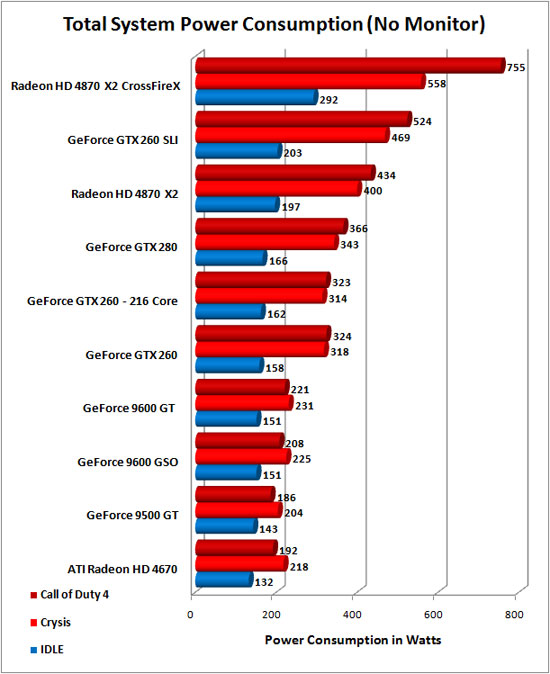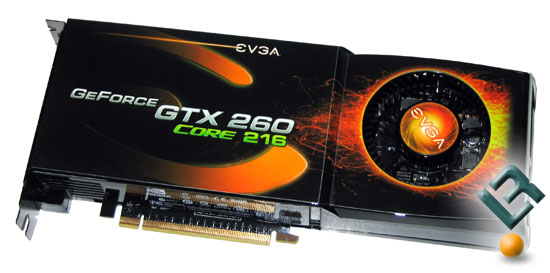EVGA GeForce GTX 260 Core 216 Superclocked Video Card
Power Consumption and Final Thoughts
Power Consumption
For testing power consumption, we took our test system and plugged it into a Seasonic Power Angel. For idle numbers, we allowed the system to idle on the desktop for 15 minutes and took the reading. For load numbers, we measured the peak wattage used by the system while running the game Call of Duty 4 at 1280×1024 with high graphics quality.

Power Consumption Results: The additional 24 shader processors that are found on the GeForce GTX 260 Core 216 don’t seem to impact power consumption as it was right around the consumption levels of the GeForce GTX 260.

Final Thoughts and Conclusions:
The GeForce GTX 260 Core 216 does, without a doubt, improve performance over the original GeForce GTX 260 thanks to the additional 24 shaders that have been added to the graphics card. By increasing the number of shaders from 192 to 216 (a 12.5% increase) performance improvements were seen, but no where near the 12.5% that one might expect and this is on an overclocked version of the card! The folding performance numbers where I downclocked the Core 216 to be even with the Core 192 version of the GeForce GTX 260 showed that clock for clock only a 2-3% performance boost is to be had, which is what you should expect as well. If the GeForce GTX 260 had been originally launched with with this 216 core design it would have been nice, but who knew just how well the Radeon HD 4870 was going to perform? Think of the additional shader processors as an evolutionary, and not revolutionary, change.
When it comes to pricing the original EVGA GeForce GTX 260 can be found for just $239.99 after rebate, which is $70 less than the $309.99 EVGA GeForce GTX 260 Core 210 Superclocked card that was looked at today. Other name brand GeForce GTX 260 graphics cards can be found for $214.99 after rebate, so it’s hard to give the new Core 216 version the thumbs up for such a small performance boost that it offers. If you look at Newegg right now the lowest priced GTX 260 Core 216 is $279.99 after rebate, which makes it 30% more expensive than the original GeForce GTX 260. The GeForce GTX 260 is a heck of a bargain right now for price versus performance shoppers. The ATI Radeon HD 4870 can still be found for $249.99 after rebate, so be sure to keep that one in mind as well.
To conclude this article the GeForce GTX 260 Core 216 is a nice addition to the NVIDIA graphics card product stack and is nothing more than an extra thread processing cluster that was added to the original GTX 260 design. If the price is right on the GeForce GTX 260 Core 216 then it’s an easy pick over the GeForce GTX 260 as it has more shader processors, which does translate to better performance. Overclocking performance on the card is impressive though and the EVGA GeForce GTX 260 Superclocked Edition was able to beat a GeForce GTX 280 in 3DMark Vantage, which is stellar.
Legit Bottom Line: The GeForce GTX 260 Core 216 improves performance by adding 24 more shader processors, but increases the price tag at the same time.

Comments are closed.